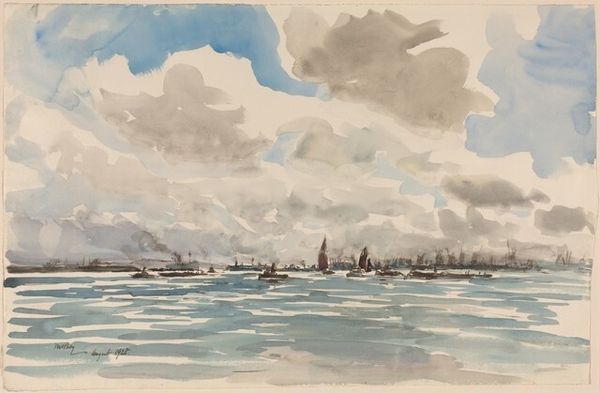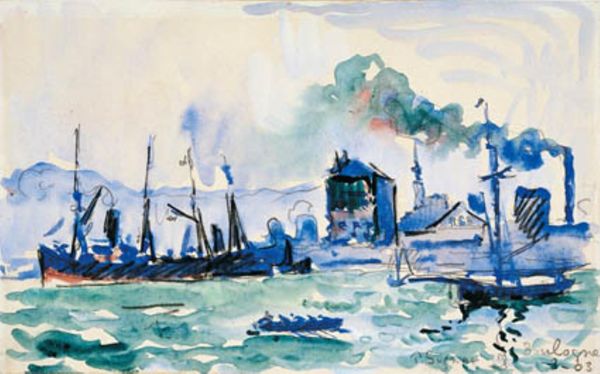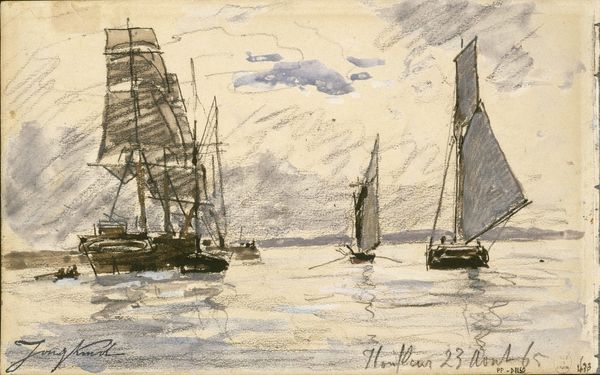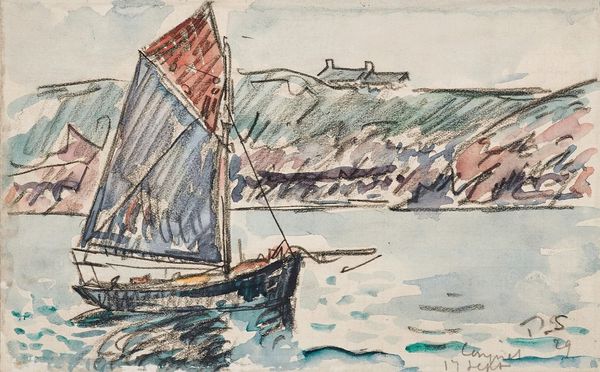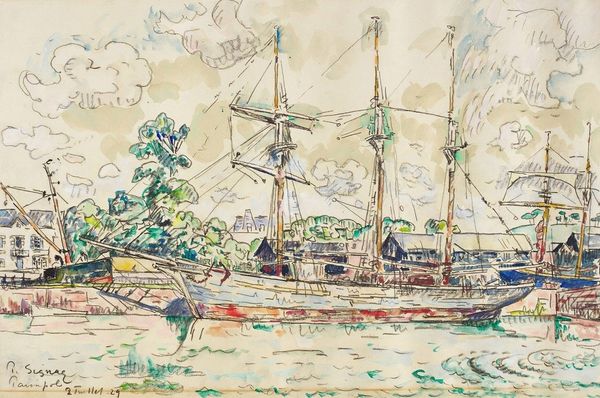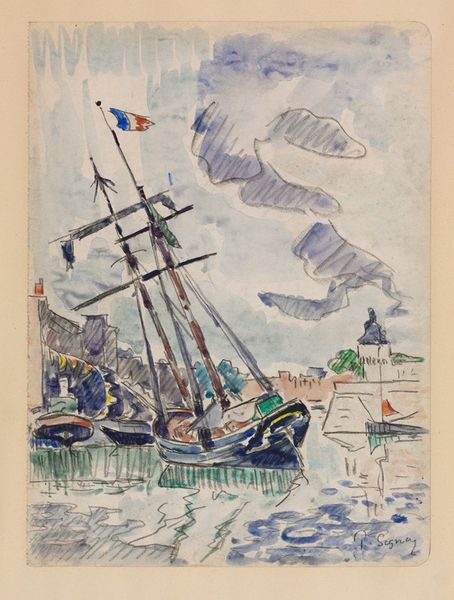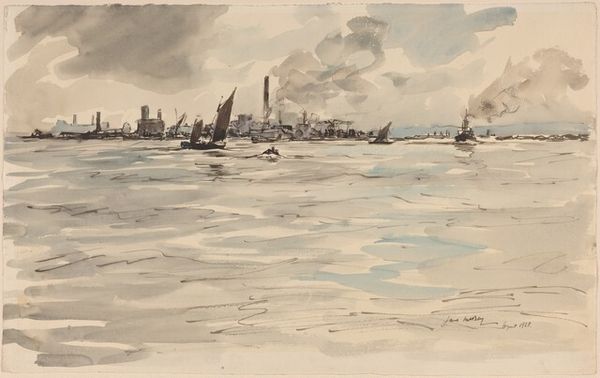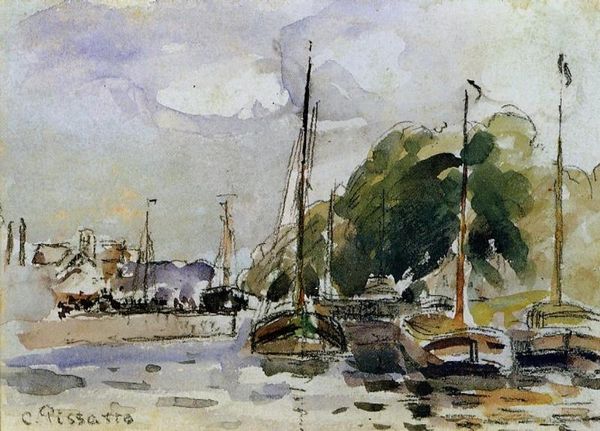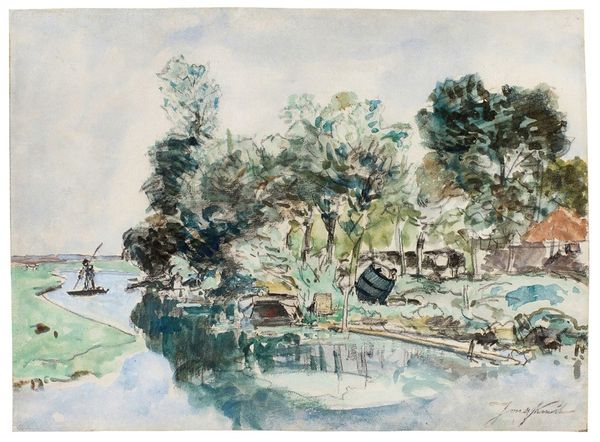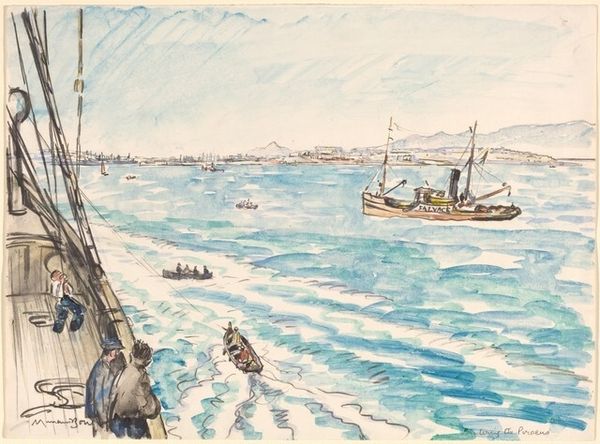
painting, plein-air, watercolor
#
painting
#
impressionism
#
plein-air
#
landscape
#
impressionist landscape
#
handmade artwork painting
#
watercolor
#
watercolor
Copyright: Public Domain: Artvee
Curator: Here we have Johan Barthold Jongkind's "Fishing Boat," likely painted sometime between 1878 and 1891. It's a delicate watercolor, typical of his plein-air approach to landscape. Editor: My first thought is of a gathering storm, the way those grey and black clouds are brushed across the paper. There’s a definite sense of nature's raw power in this seemingly simple sketch. Curator: Jongkind was fascinated by the immediacy of watercolor. Consider how he uses the translucence of the medium to capture fleeting light on the water, and notice the minimal strokes employed to portray the figures on the boat; what labor they may be performing, their social standing, and the commercial use of such transport Editor: Yes, the water reflections give a depth to this work beyond it's dimensions. And those figures… boats, throughout history, represent voyages, hopes, the crossing of boundaries both literal and metaphorical. Notice how small the figures are in relation to the natural elements. A powerful statement on humanity's place. Curator: Jongkind played a significant role in the development of Impressionism, influencing artists like Monet. I'm intrigued by the material constraints. Watercolors are economical. What was his economic situation, and to what market was this made for? Editor: It also resonates on a personal level. The symbol of water itself-- the subconscious, mystery, constant change, that grey is foreboding--reflects the potential turmoil or transformation. He gives water, clouds and ships anthropomorphic character. Curator: An interesting counterpoint to the industrial growth of the time, too. Jongkind gives us a glimpse of how labor intersects nature. The handcraft of these modest images offers a quieter, slower tempo, a counter-narrative. Editor: Yes, this unassuming little work seems deceptively simple. Underneath, we find reflections on nature's might and the enduring themes of human experience. Curator: Exactly. By looking at its materiality, its making, and how it was situated within a particular context, we begin to perceive its multiple layers of meaning and impact. Editor: Indeed, viewing it through an iconographic lens and contemplating the symbols and collective memories contained within unlocks new layers of emotional and cultural impact.
Comments
No comments
Be the first to comment and join the conversation on the ultimate creative platform.
